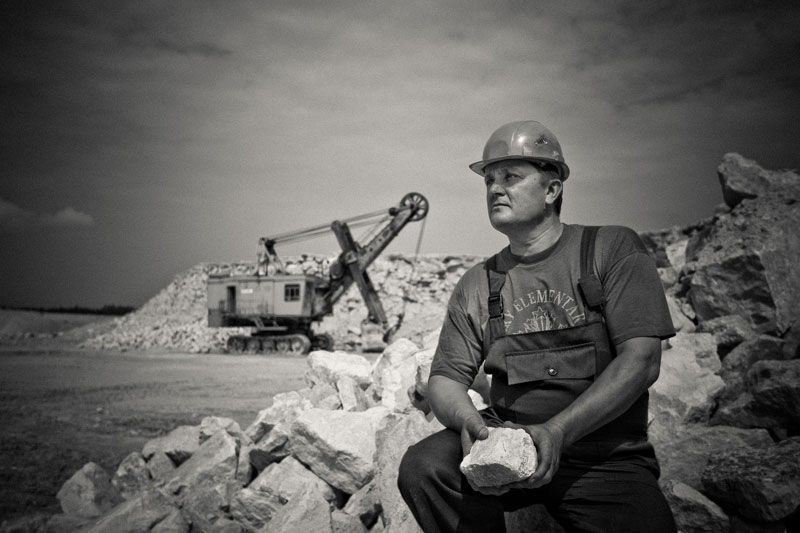
3D printing is getting attention for all sorts of cool innovations, from artificial coral reefs to facial reconstruction. But the more interesting side of this technology, at least for business, is how it is quietly changing the underlying economics of many industries – with far-reaching consequences.
Take construction. It’s a huge industry worldwide, accounting for $9 trillion in revenues and 6% of global GDP. It’s also been a technology laggard, with productivity barely rising over the past few decades. Even with digital blueprints and other fancy software programs, we still put up buildings pretty much as we did a century ago.
3D printing promises to change that, because it fully digitizes the production process. Everything is reduced to precise measurements, so owners and architects can make buildings just the way they want them, without all the compromises that arise from analog work.
For example, we’ll be able to make buildings in shapes that haven’t been economical to produce up to now. Instead of the rectilinear forms that dominate our streetscapes and skylines, we’ll get the kind of curves you see in nature. That’s not just good for fans of The Hobbit and the Spanish architect Antoni Gaudi. It also makes for stronger, lighter structures with the flexibility to conform to human needs. Check out the futuristic design in office buildings that a Chinese company, Winsun just printed in Dubai.
Those buildings will also be a lot cheaper to construct. Because everything is digital, we’ll rely on robot printers to do much of the work. Already the Institute for Advanced Architecture in Gaudi’s home town of Barcelona has developed “minibuilders,” an experimental array of small robots that swarm around and put up a building in less time and at lower cost than it would take human workers. The process also generates a lot less waste. And this isn’t just about making dull concrete structures. The robots also work with composites of wood, plastic, and metal.
That’s for building on site, but if you prefabricate the structures and ship them over, you get even greater savings. Prefabrication has been around for a while, but 3D printing allows for such precision that the assembly process is literally a snap. Saudi Arabia, whose population is exploding, is talking with Winsun about printing as many as 1.5 million housing units over the next five years. Winsun thinks this technology could eventually go a long way to solve the global scourge of substandard housing.
3D printing designs are still pretty rudimentary, but once architects sink their teeth into the possibilities, and take full advantage of the software, we’ll get structures that attract the most discriminating tastes. And which kind of construction company will these architects want to work with? Up to now, successful construction firms have focused on a few key areas. They’ve gained access to a large and dependable supply of local labor, as well as suppliers. They’ve excelled at the complexities of project management. And they’ve figured out how to play the game of bidding low, then making it up by overcharging on the inevitable change orders.
3D printing will take away those advantages. Labor costs will go down, and much of the remaining labor will involve programming and machine maintenance. Materials will become increasingly standardized and digitally catalogued, so architects will have a much wider array of suppliers to choose from. Project management will get easier as digital coding enables the precise timing of delivery and construction. As for change orders, those will become far less frequent, because architects will be able to “see” and test their digitized designs before committing to them.
Future construction firms will have to succeed with their digital savvy and their readiness to collaborate with clients. The industry will operate a lot more like consumer retail does now – super-efficient and responsive in ways earlier generations wouldn’t have thought possible. And like manufacturing and the military, construction will no longer be hospitable to workers without substantial technical training.
As it gains traction, I predict that 3D printing will be the killer app that finally convinces the entire stodgy construction industry to go digital. Materials companies, distributors, and builders will have no choice but to convert their once jealously guarded information into readily accessible software formats.
Since the tech bust in 2000, economists have puzzled over the slowdown in American productivity growth. If productivity had kept rising at 1990s levels, the country would be a good deal richer – and household incomes would likely be growing instead of stagnating. The political mood might be brighter too.
As suggested in a new report from McKinsey, a big reason for the slowdown has been the failure of several major industries to adopt digital advances. 3D printing has the potential to drive digitization not just in construction but other big sectors too. If we can just solve the jobs problem, that would be the coolest innovation of all.
This blog was originally published online by Forbes magazine on April 10, 2017, at https://www.forbes.com/sites/richarddaveni/2017/04/10/printing-the-future-the-last-bastion-of-blue-collar-labor-is-about-to-fall/#5f0fe9ec6d78
Copyright Forbes 2017

Thinkers50 Limited
The Studio
Highfield Lane
Wargrave RG10 8PZ
United Kingdom

Thinkers50 Limited
The Studio
Highfield Lane
Wargrave RG10 8PZ
United Kingdom

Thinkers50 Limited
The Studio
Highfield Lane
Wargrave RG10 8PZ
United Kingdom
| Cookie | Duration | Description |
|---|---|---|
| LANG | 9 hours | Linkedin set this cookie to set user's preferred language. |
| nsid | session | This cookie is set by the provider PayPal to enable the PayPal payment service in the website. |
| sp_landing | 1 day | The sp_landing is set by Spotify to implement audio content from Spotify on the website and also registers information on user interaction related to the audio content. |
| sp_t | 1 year | The sp_t cookie is set by Spotify to implement audio content from Spotify on the website and also registers information on user interaction related to the audio content. |
| tsrce | 3 days | PayPal sets this cookie to enable the PayPal payment service in the website. |
| x-pp-s | session | PayPal sets this cookie to process payments on the site. |
| __cf_bm | 30 minutes | This cookie, set by Cloudflare, is used to support Cloudflare Bot Management. |
| Cookie | Duration | Description |
|---|---|---|
| l7_az | 30 minutes | This cookie is necessary for the PayPal login-function on the website. |
| Cookie | Duration | Description |
|---|---|---|
| CONSENT | 2 years | YouTube sets this cookie via embedded youtube-videos and registers anonymous statistical data. |
| _ga | 2 years | The _ga cookie, installed by Google Analytics, calculates visitor, session and campaign data and also keeps track of site usage for the site's analytics report. The cookie stores information anonymously and assigns a randomly generated number to recognize unique visitors. |
| _gat_gtag_UA_10408481_1 | 1 minute | Set by Google to distinguish users. |
| _ga_ZP8HQ8RZXS | 2 years | This cookie is installed by Google Analytics. |
| _gid | 1 day | Installed by Google Analytics, _gid cookie stores information on how visitors use a website, while also creating an analytics report of the website's performance. Some of the data that are collected include the number of visitors, their source, and the pages they visit anonymously. |
| Cookie | Duration | Description |
|---|---|---|
| NID | 6 months | NID cookie, set by Google, is used for advertising purposes; to limit the number of times the user sees an ad, to mute unwanted ads, and to measure the effectiveness of ads. |
| test_cookie | 15 minutes | The test_cookie is set by doubleclick.net and is used to determine if the user's browser supports cookies. |
| VISITOR_INFO1_LIVE | 5 months 27 days | A cookie set by YouTube to measure bandwidth that determines whether the user gets the new or old player interface. |
| YSC | session | YSC cookie is set by Youtube and is used to track the views of embedded videos on Youtube pages. |
| yt-remote-connected-devices | never | YouTube sets this cookie to store the video preferences of the user using embedded YouTube video. |
| yt-remote-device-id | never | YouTube sets this cookie to store the video preferences of the user using embedded YouTube video. |
| yt.innertube::nextId | never | This cookie, set by YouTube, registers a unique ID to store data on what videos from YouTube the user has seen. |
| yt.innertube::requests | never | This cookie, set by YouTube, registers a unique ID to store data on what videos from YouTube the user has seen. |
| Cookie | Duration | Description |
|---|---|---|
| DEVICE_INFO | 5 months 27 days | No description |
| loglevel | never | No description available. |
| m | 2 years | No description available. |
Thinkers50 Limited has updated its Privacy Policy on 28 March 2024 with several amendments and additions to the previous version, to fully incorporate to the text information required by current applicable date protection regulation. Processing of the personal data of Thinkers50’s customers, potential customers and other stakeholders has not been changed essentially, but the texts have been clarified and amended to give more detailed information of the processing activities.